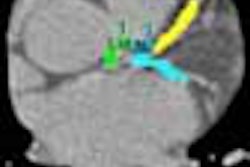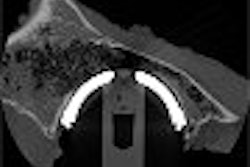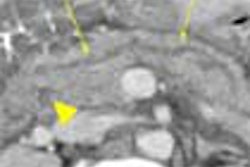SAN FRANCISCO - Emergency physicians are often reluctant to scan pediatric trauma patients with CT, in hopes of avoiding excessive radiation exposure. However, two new studies confirm that the battery of lab tests commonly ordered when young patients present to the emergency room fails miserably at predicting injury. The studies, presented at this week’s meeting of the Pediatric American Societies, underscore the need for smarter and perhaps less expensive strategies for dealing with injured children.
The first study came about when Dr. Scott Bouton and colleagues at the Women and Children’s Hospital of Buffalo in New York began to suspect that protocol-driven laboratory evaluation of trauma patients was no longer impacting patient management or outcomes at their institution.
In an effort to gauge the efficiency of lab results in predicting injury, the researchers collected data on all children evaluated by the hospital’s pediatric trauma team from 2001 through 2003. Data on 464 patients included age (mean age, 10), sex, the mechanism of injury, injuries suffered, lab studies, x-ray and CT results, and discharge diagnosis. Follow-up visits to the surgery clinic were also reviewed for patient outcome and complications, Bouton said. Imaging, surgery, and discharge diagnosis served as the study’s reference standard.
Approximately 7,500 lab tests were ordered initially, with an additional 7,100 tests ordered within the first 24 hours -- an average of 33 tests per patient, he said. However, the results showed that only 732 -- less than 10% -- of the initial tests were abnormal.
“Interestingly, this 10% did not correspond to true intra-abdominal injuries,” Bouton said.
AST (aspartate amino transferase) had a sensitivity for liver injuries of 16%, for example, with a positive predictive value (PPV) of 10% and a false-positive rate of 90%. The sensitivity of ALT (amino alanine transferase) for liver injury was 16%, with a PPV of 23%, and a false-positive rate of 77%. There were only two pancreatic injuries, and neither of these cases had elevated amylase or lipase. Still, amylase was drawn 450 times in 462 patients, he said. Hematuria was absent in patients with GU injuries and had a false-positive rate of 100%.
The best predictor of injury by far was the physical examination, with sensitivity of 96% for intra-abdominal injury and a negative predictive value of 99%. No new injuries found at follow-up required intervention.
The total cost of the blood work amounted to $350,000, while 73% of the patients were sent home within 24 hours, Bouton said.
“We can conclude that there’s a very large number of lab studies carried out by protocol on this patient population,” Bouton said. “The cost of these studies is high, and we can also say from these graphs…that organ-specific tests have very poor sensitivity for detecting injury, and also very high false-positive rates. So in summary, protocol-driven broad-spectrum lab testing is not useful or necessary in the pediatric population.”
The protocol may still have value in patients with severe injuries, but the study did not address this question, Bouton said in response to a question from the audience.
Labs flop in abdominal trauma
In a poster presentation at the PAS meeting, Dr. Andrew Capraro from Children’s Hospital in Boston discussed his group’s research, a study that was similar in many ways to the New York group’s, and that yielded similar results.
The three-year retrospective study reviewed the charts of 382 patients (mean age 9.5 years, range 110.4 mos., 68% male) who were evaluated at the hospital for pediatric intra-abdominal trauma, comparing the lab results to those of CT imaging, performed on all enrolled patients prior to discharge. Several studies have examined the connection between lab results and patient outcomes, the poster acknowledges, but the results have been inconclusive.
Capraro, along with Dr. David Mooney and Dr. Mark Waltzman, assessed the specificity (SNS), specificity (SPC), and positive predictive value (PPV) of lab findings. The lab results were as follows:
 |
|||||
| Lab test | Abnormal | SNS | SPC | PPV | P value |
 |
|||||
| NA (sodium) | 9% | 5 | 88 | 19 | 0.11 |
| GLU (glucose) | 67% | 75 | 27 | 37 | 0.65 |
| WBC (white blood count) | 43% | 52 | 52 | 36 | 0.52 |
| HCT (hematocrit) | 33% | 34 | 61 | 32 | 0.53 |
| PLT (platelets) | 15% | 20 | 86 | 42 | 0.29 |
| PT (prothrombin time) | 16% | 22 | 84 | 43 | 0.36 |
| PTT (thromboplastin) | 8% | 9 | 92 | 41 | 0.71 |
| AST (asp. aminotransferase) | 47% | 63 | 48 | 38 | 0.14 |
| ALT (al. aminotransferase) | 28% | 53 | 71 | 48 | 0.001 |
| AMY (amylase) | 4% | 6 | 95 | 45 | 0.54 |
| LIP (lipase) | 7% | 16 | 96 | 75 | 0.007 |
| U/A (hmgl. on urinalysis) | 43% | 52 | 50 | 36 | 0.80 |
 |
|||||
CT findings were normal in 158/382 patients, with free fluid in 26 patients, liver lacerations in 21, splenic lacerations in 20, pulmonary contusion in eight, liver edema in seven, pancreas lacerations in five, pelvic vertebral fractures in five, renal contusions or lacerations in five, bowel edema, duodenal hematoma or perforated bowel in four patients, adrenal injuries in two, and one each of peritoneal fibroblast, renal cyst, and perforated bladder.
“In children who were evaluated by the trauma team, there was no consistent lab (test) that was abnormal on screening, regardless of what the mechanism of action was,” Capraro told AuntMinnie.com. “And when we specifically looked at whether they predicted intra-abdominal pathology, none of them were highly sensitive or specific. So as a result, they should not be used as a screening tool, and you should move on to whatever the next step is, whether that be intraoperative exploration or imaging.”
By Eric BarnesAuntMinnie.com staff writer
May 6, 2004
Copyright © 2004 AuntMinnie.com



















